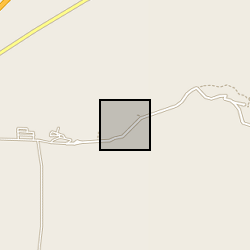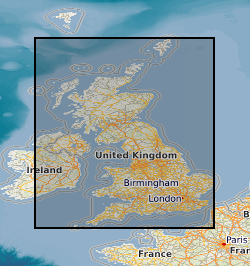Text file
Type of resources
Topics
Keywords
Contact for the resource
Provided by
Years
Formats
Representation types
Update frequencies
Resolution
-

Annual lamina thickness (microns), lamina count, and age model (Ma, years) for the Early Pleistocene (Lines 1 and 2) and early Holocene speleothems from Buffalo Cave, South Africa. The samples, methods and results are described in full in: Hopley, P. J. et al. (2018) Orbital precession modulates interannual rainfall variability, as recorded in an Early Pleistocene speleothem. Geology. DOI:10.1130/G45019.1
-
[THIS DATASET HAS BEEN WITHDRAWN]. Phenotypes for Scots pine mother trees and their cones/seed from 21 populations across Scotland in 2007. The seed was used to establish a long-term multisite common garden trial at three nurseries/field sites. Full details about this dataset can be found at https://doi.org/10.5285/ac687a66-135e-4c65-8bf6-c5a3be9fd9aa
-
[THIS DATASET HAS BEEN WITHDRAWN]. Phenotypes (growth and phenology) for Scots pine trees in a long-term common garden trial planted in three sites in Scotland, surveyed annually from 2013 to 2020. Full details about this dataset can be found at https://doi.org/10.5285/f463bc5c-bb79-4967-a8dc-f662f57f7020
-
Phenotypes (growth, phenology and form) for Scots pine trees in a long-term common garden trial grown in three nurseries in Scotland and surveyed from 2007 to 2011. Full details about this dataset can be found at https://doi.org/10.5285/29ced467-8e03-4132-83b9-dc2aa50537cd
-

Magnetotelluric data for the Halloween 2003 magnetic storm in the vicinity of Uppsala (UPS), Sweden and Eskdalemuir (ESK), Scotland geomagnetic observatories synthesized from geomagnetic observatory data from INTERMAGNET. The data were generated to facilitate comparison of the ground effects of the Halloween 2003 magnetic storm in Sweden and Scotland. The data demonstrate the greater risk of hazardous storm-time electric fields being generated in southern Sweden compared to central Scotland and are further described in the gold open access paper: F. Simpson and K. Bahr, 2020a. The role of tectonic-plate thickness and mantle conductance in determining regional vulnerability to extreme space weather events: possible enhancement of magnetic source fields by secondary induction in the asthenosphere. Space Weather, accepted, doi pending. The synthesis technique that enables electric fields to be estimated from geomagnetic observatory data is described and validated in the following gold open access papers: F. Simpson and K. Bahr, 2020b. Nowcasting and validating Earth's electric field response to extreme space weather events using magnetotelluric data: application to the September 2017 geomagnetic storm and comparison to observed and modelled fields in Scotland, Space Weather, 18, e2019SW002432, https://doi.org/10.1029/2019SW002432. F. Simpson and K. Bahr, 2020c. Estimating the electric field response to the Halloween 2003 and September 2017 magnetic storms across Scotland using observed geomagnetic fields, magnetotelluric impedances and perturbation tensors, JSWSC, swsc200019, 10, (48), https://doi.org/10.1051/swsc/2020049.
-

Data from onshore wells provided to BGS as part of an agreement with NSTA/OGA/DECC Digital data (includes, well logs, well reports and downhole data) for oil and gas exploration and appraisal wells drilled in the UK and held on behalf of the North Sea Transitory Authority (formerly the Oil & Gas Authority, formerly the Department of Energy and Climate Change). External data therefore BGS has no control on quality. Provided to OGA/DECC/BGS by oil companies as part of their obligations under licensing regulations, PON 9b regulations notice.
 NERC Data Catalogue Service
NERC Data Catalogue Service